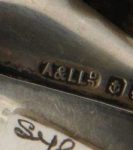Silver History. Silver was one of the seven metals of antiquity that were known to prehistoric humans and whose discovery is thus lost to history. In particular, the three metals of group 11, copper, silver, and gold, occur in the elemental form in nature and were probably used as the first primitive forms of money as opposed to simple bartering. However, unlike copper, silver did not lead to the growth of metallurgy on account of its low structural strength, and was more often as ornaments or money. Since silver is more reactive than gold, supplies of native silver were much more limited than those of gold. For example, silver was more expensive than gold in Egypt until around the fifteenth century BC: the Egyptians are thought to have separated gold from silver by heating the metals with salt, and then reducing the silver chloride produced to the metal. Reference: Wikipedia
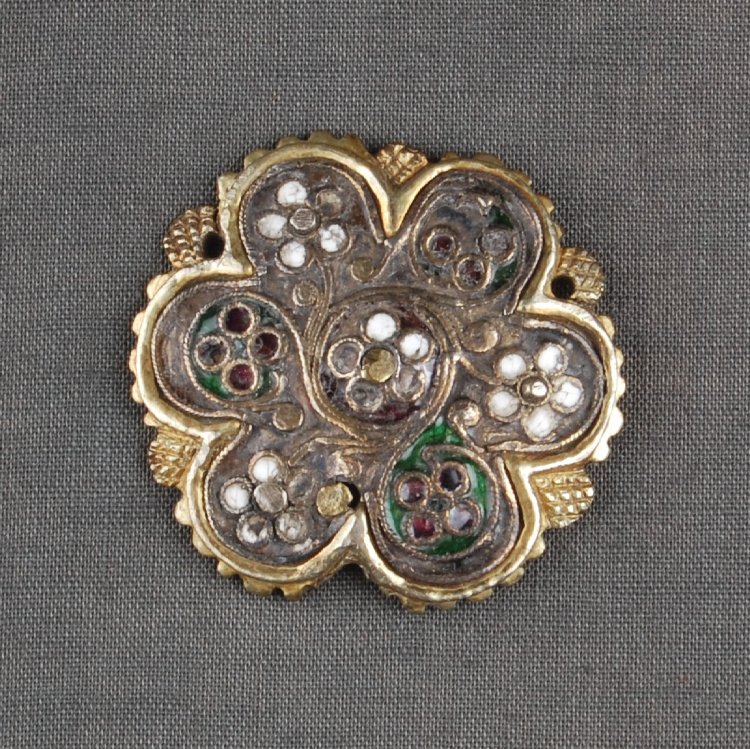
Belt-fitting; silver-gilt, enamel; circular lobed fitting with scalloped edges alternating with stylised leaves; the floral motif in filigree enamel in translucent red, translucent green and opaque white; central rivet on reverse, fragments of textile attached to rivet. Culture/period Late Medieval term details Date1400-1500
Reference: © The Trustees of the British Museum
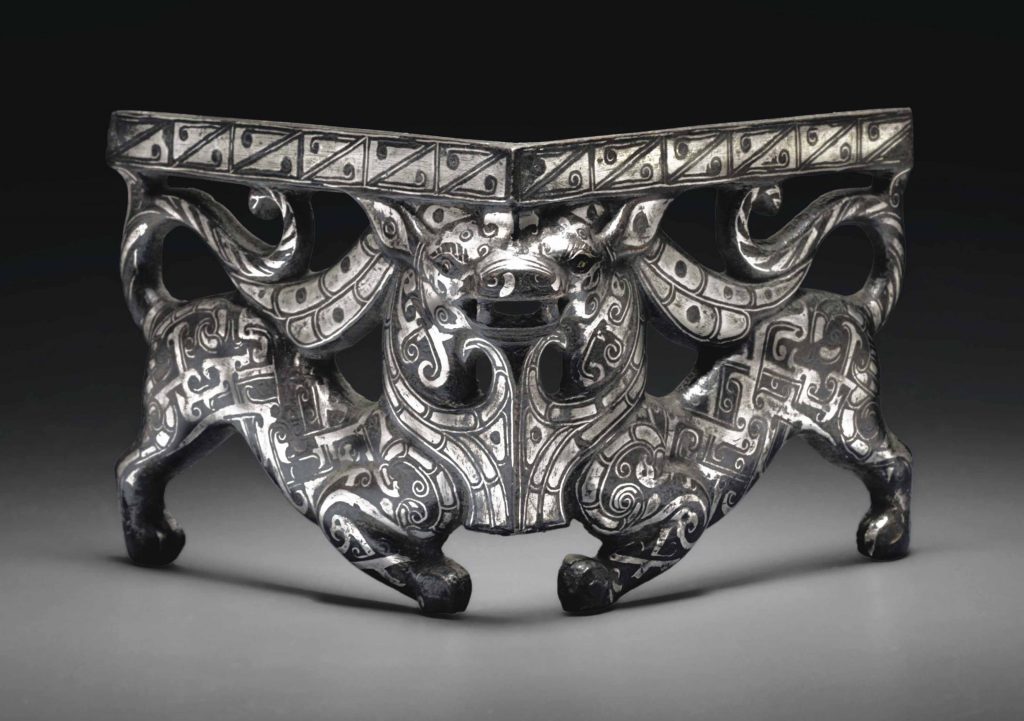
A VERY RARE AND IMPORTANT SILVER-INLAID BRONZE CORNER MOUNT WARRING STATES PERIOD, 4TH-3RD CENTURY BC The V-shaped mount is cast in openwork as two mythical beasts confronted at the corner where the two heads become one head with a common muzzle and open mouth. Each animal shown in profile in a semi-crouching position has tapered ears and long bifurcated crest inlaid with feather-like segments, one segment swept forward across the neck, the other swept back onto the rump below the long, striped, S-shaped tail. The muscular body is inlaid with wide interlocking geometric scrolls and fine linear scrolls, those on the neck, front haunch and lower leg terminating in a small bird head, and with further feather-segmented scrolls on the rear haunch and leg. The whole is surmounted by an angular bracket inlaid with rectangular panels formed by scroll-filled triangles, and has a shallow groove on the undecorated reverse. 4 1/8 x 3 1/8 in. (10.5 x 7.9 cm.)
Sold for USD 271,500 at Christies in 2017
Old World Silver (4000 BC – 1500 AD)
The area of Anatolia (modern Turkey) is considered the first major source of mined silver, having provided the resource to craftsman throughout Asia Minor. Silver from the Anatolian region largely served as the source of silver for the Western cultures flourishing in the Near East, Crete, and Greece.
Silver craftsmanship was centered largely in Asia Minor and Greek Islands, along with areas of mainland Greece dominated by the Mycenaean culture. Asia Minor provided most of the supply for the flourishing silver market.
A concentrated effort to mine silver began sometime after 3000 B.C. The first sophisticated processing of silver ore was attributed to the Chaldeans in about 2500 B.C., who used a “cupellation” process to extract silver from lead-silver ores. The need for traditional silver (particularly for the flourishing Minoan and later Mycenaean civilizations) resulted in the location and exploitation of silver deposits in what is now Armenia
After the catastrophic destruction of the Minoan (Cretan) civilization in 1600 B.C. and the decline of the Mycenaean culture around 1200 B.C., the focus of silver production changed. The mines of Laurium (near Athens) became the leading production center and provided silver for the burgeoning Greek civilization. Further, the silver trade throughout Asia Minor and North Africa expanded significantly after the 8th century B.C.
The Laurium mines were highly productive; estimates from historical writings and physical evidence from old mine dumps indicate silver production to have been about 1 million troy ounces per year at Laurium during the height if production (600 B.C. to 300 B.C.). In fact, for about 1,000 years ending around the 1st century A.D., the Laurium mines were the largest individual source of world silver production. Outside the Laurium mines, production was concentrated mainly in Asia Minor, Sardinia, other Grecian locations and, to a limited extent, in Asia.
The period following the heyday of Greek mining in Laurium included the Carthaginians’ exploitation of Spanish silver. After the Punic Wars, the Romans replaced the Carthaginians as the exploiters of Spanish silver and extended their silver mining to other areas of continental Europe.
Spanish mines became a critically important source of silver for nearly 1,000 years, thought their exploitation was halted temporarily by the Moorish conquest of Spain in the 8th century A.D. The Spanish mines not only provided a substantial portion of domestic needs of the Roman Empire until 476 A.D. but also served as a critical source of silver for the Asian spice trade. To meet the burgeoning trading requirements, Greece, Asia Minor, and Italy supplemented the Spanish production.
The Moorish invasion of Spain necessitated that the exploitation of silver move to a broader spectrum of countries, principally in Central Europe. Several major silver mine discoveries occurred between 750 and 1200 A.D., including the classic Schemnitz, Rammelsburg, Goslar, and Saxony regions in Germany. Concurrently, discoveries of silver were made in Austria-Hungary and elsewhere in Eastern Europe.
Based on the analysis of available literature and historical records, the production levels from 300 B.C. to 1000 A.D. are not likely to have risen significantly from the estimated 1.5 million troy ounces per year levels of the Laurium mine era. Although mine production in Spain dominated the first 1,000 years A.D., it was balanced by the decline in production at Laurium and Asia Minor. The real expansion in production occurred in the 500-year period from 1000-1500 A.D., when the number of mining locations and, to a lesser extent, the improvements in mining and processing technology occurred.
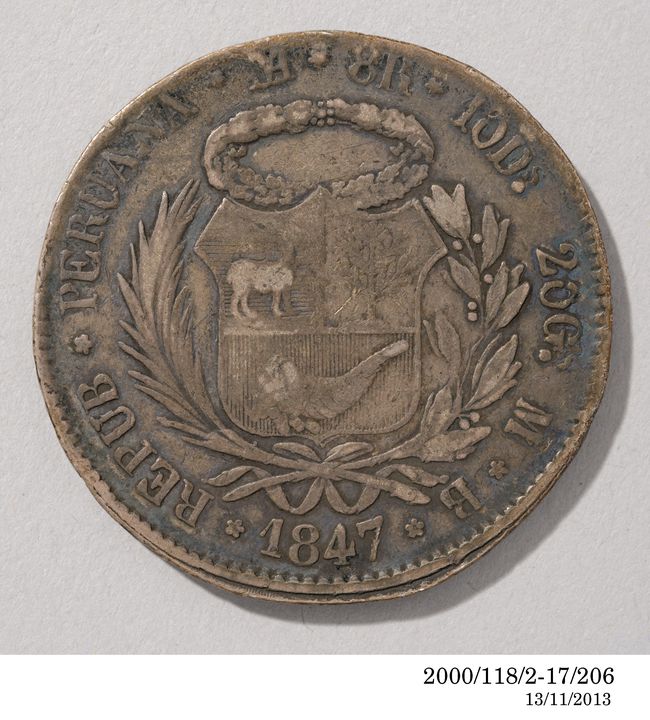
Coin, eight reales, silver, Lima, Peru, 1847 Made by Lima Mint in Lima, Perú, South America, 1847. Eight reale coin, decorated edge, silver OBVERSE; central effigy of a figure holding a spear and sheild, shield text, “LIBERIAD”, surrounding legend, “FIRME Y FELIZ POR LA UNION” REVERSE; central design of the Peruvian coat of arms, surrounding legend, REPUB. PERUANA. M. 8R. 10D. 20G. M. B”, “1847” RIM; engraved decoration of a floral and star pattern
Reference: Museum of Applied Art and Sciences
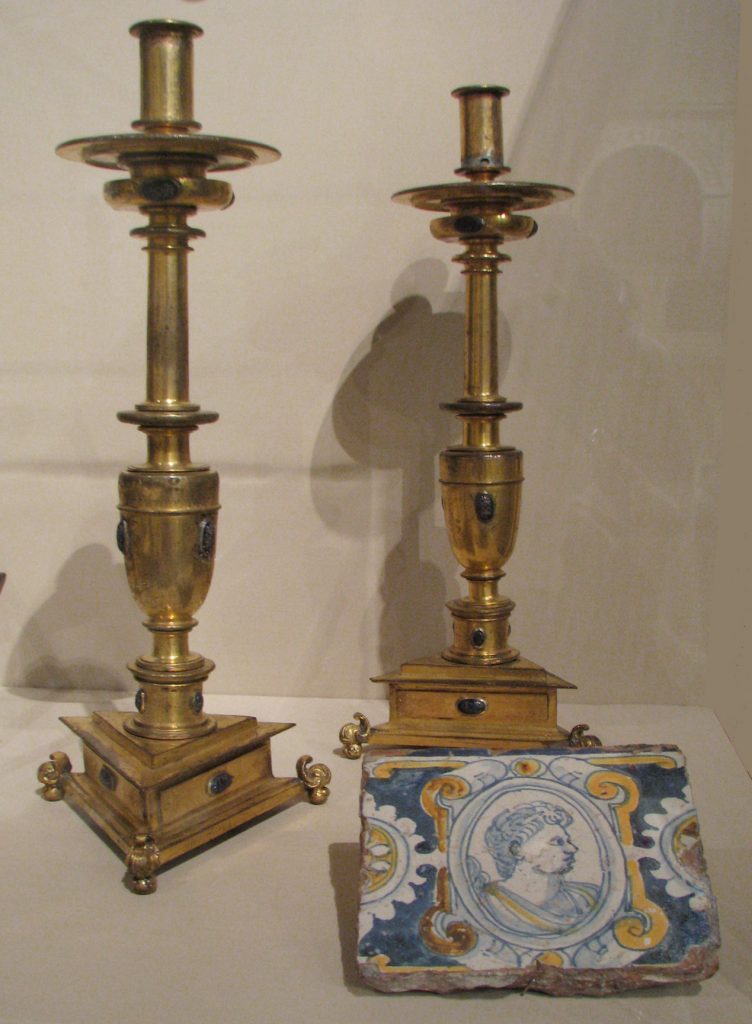
Pair of candlesticks,17th century Spanish King Philip II (r. 1556–98) lent his name to the Severe (Philip II) style, which was heavily influenced by his patronage and associated with the construction of the Escorial. The style was introduced into the design of Spanish metalwork in the last quarter of the sixteenth century and flourished throughout the reigns of his next two successors.
Reference: The Metropolitan Museum of Art

Spanish or South American, 17th century Processional Cross the silver lower stem and copper insert later silver and gilt silver, on a wood core, mounted on a later velvet covered wood base cross: 91cm., 35¾in. base: 8cm., 3 1/8 in.
Sold for 13,750 GBP at Sothebys in 2018
New World Silver (1500 – 1875)
More significant improvements in technology and discovery of the “New World” in 1492 led to a vast storehouse of mined silver that expanded silver production by nearly an order of magnitude, most particularly in the development of the mercury amalgamation process. The first major exploitation of “New World” silver was in the Potosi district of Bolivia. Although the actual production from Bolivia from 1500 to 1800 A.D. is difficult to quantify accurately, Spanish records indicate that about 1 billion troy ounces were produced in this time-frame. For the same period, about 1.5 billion troy ounces were mined in Mexico with the bulk being mined from 1700 to 1800.
Peru’s production has been more consistent – production averaged more than 3 million troy ounces annually from 1600 through 1800. Historically, the Cerro de Pasco district has been among the leading sources of silver in Peru.
The Spanish produced Mexican silver beginning in the early 1500s. Production increased significantly in the 1700s, averaging about 9 million troy ounces annually.
From 1500 through 1800, Bolivia, Peru and Mexico accounted for over 85 percent of world production and trade. The remaining production in the period was derived largely from Germany, Hungary, and Russia, with lesser amounts from other European countries, Chile, and Japan.
After 1850, several other countries increased production particularly the United States with its discovery of the Comstock Lode in Nevada. Silver production continued worldwide, growing from 40 to 80 million troy ounces annually by the 1870s.
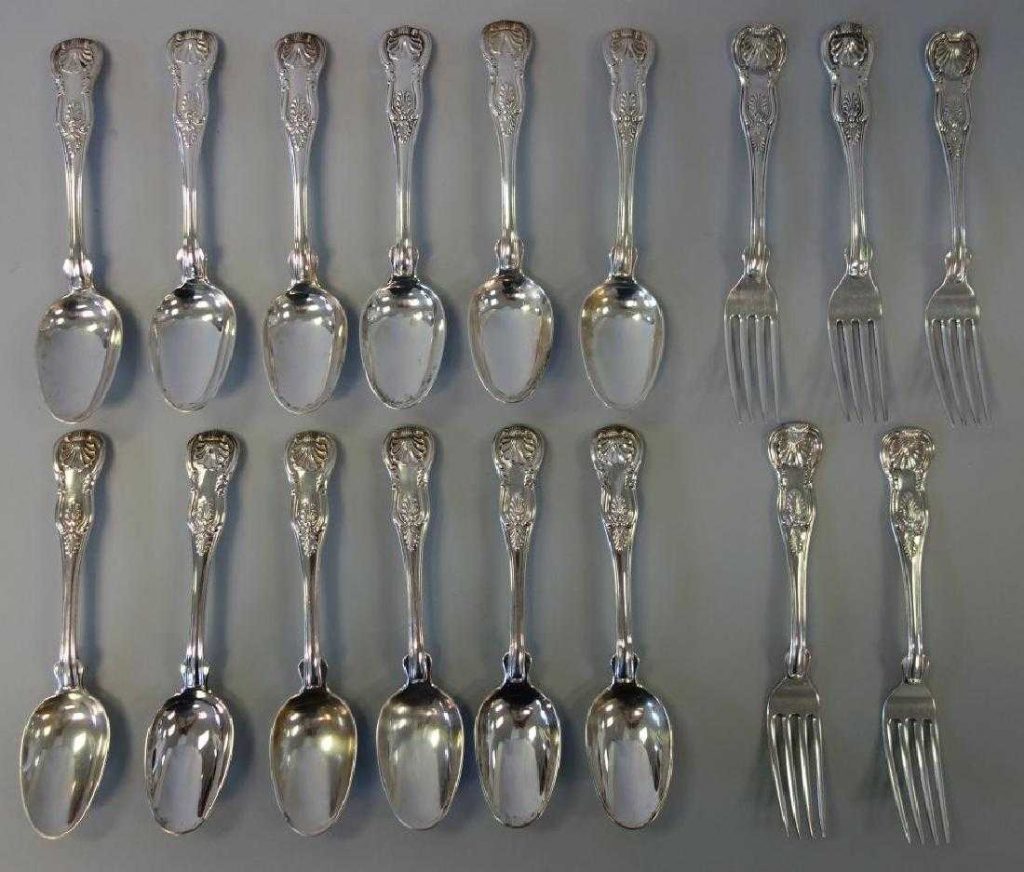
A group of 19th century American coin silver flatware. Comprised of 12 tablespoons measuring 6.75″ long. Each marked Bailey & Kitchen. Together with 5 forks, 7″ long. Each marked Bailey & Kitchen Scalloped shell motif on handle, in an English King’s Pattern. No monograms. Overall weight, 919 grams.
Sold for $325 at Klein James in 2019
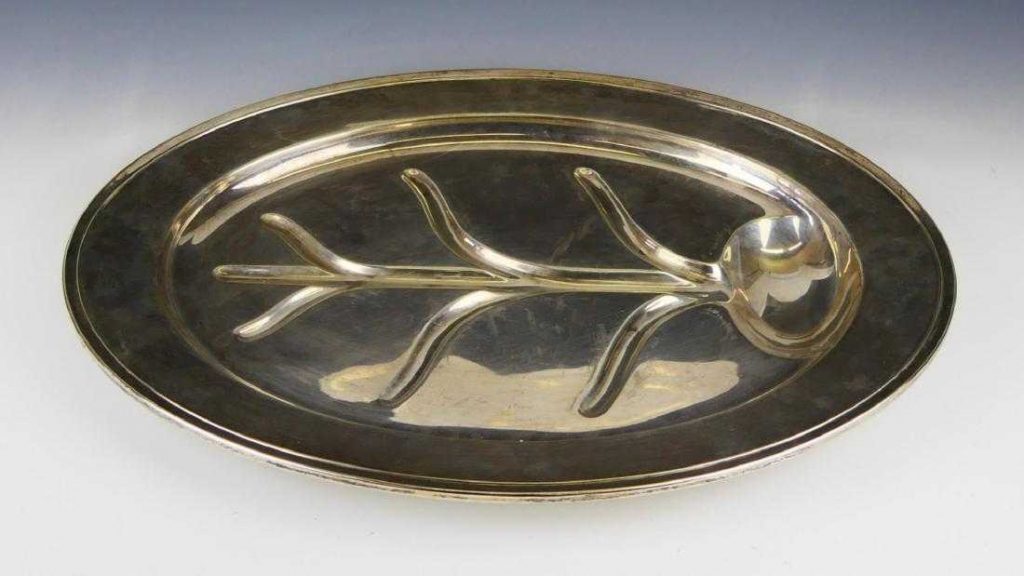
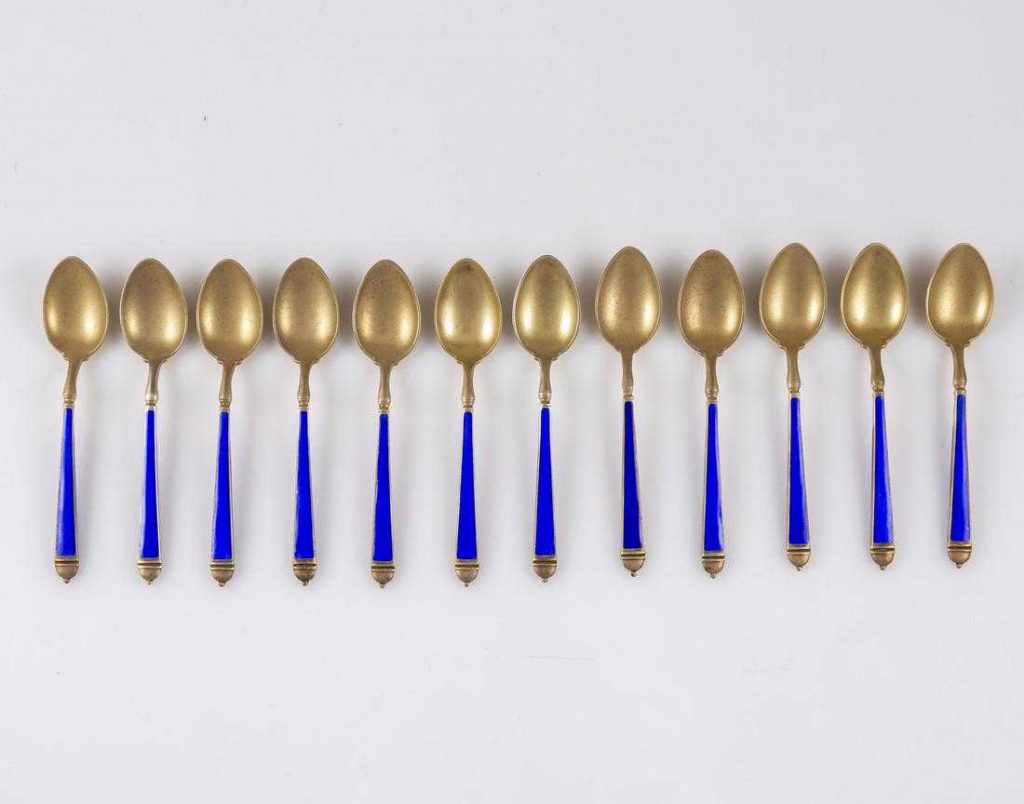
Set of 12 American sterling silver teaspoons by Watson Company sold at Tiffany & Co. Gilt and coated in blue enamel. Given in original case with Tiffany logo. Length: 10.5 cm, total weight: 184 grams. Marked.
Sold for $225 at Ishtar Antiques LTD. in 2019
The Rise Of North America (1876 – 1920)
The period from 1876 to 1920 represented an explosion in both technological innovation and exploitation of new regions worldwide. Production over the last quarter of the 19th century quadrupled over the average of the first 75 years to a total of nearly 120 million troy ounces annually.
A good deal of the new production was added from major new discoveries in the U.S., most notably the Comstock Lode area in Nevada, the Leadville district in Colorado and various districts in Utah.
Similarly, new discoveries in Australia, Central America and Europe greatly augmented total world production. The succeeding decades from 1900 to 1920 resulted in another 50 percent expansion in production to about 190 million troy ounces annually. These increases were spurred by discoveries in Canada, the United States, Africa, Mexico, Chile, Japan, and various other countries.
The explosion of technology that enabled steam-assisted drilling, mining, mine dewatering, and improved haulage was a major breakthrough. Further improvements in mining techniques enhanced the ability to handle ore and allowed for exploiting larger volumes of ore that contained silver. For example, the removal of precious metals from zinc by a technique called “fuming” provided a way to separate economically precious metals from moderate-grade complex ores.
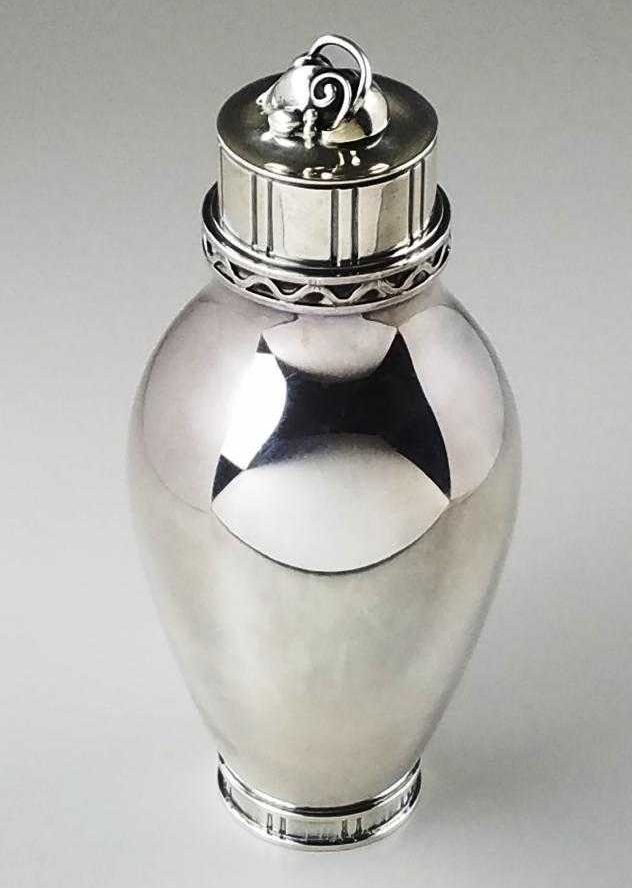
Art Deco Sterling Cocktail Shaker by H Rasmussen
Sterling Silver cocktail shaker by H. Rasmussen is from Denmark. This cocktail shaker disassembles – the lid and filter are both able to be removed. The cocktail shaker measures 9.75 inches tall with a base diameter of 2.375 inches and weighs 460.7 dwt /716.4 grams. Marked: HR Sterling Denmark 925s.
Sold for $1,500 at Jasper52
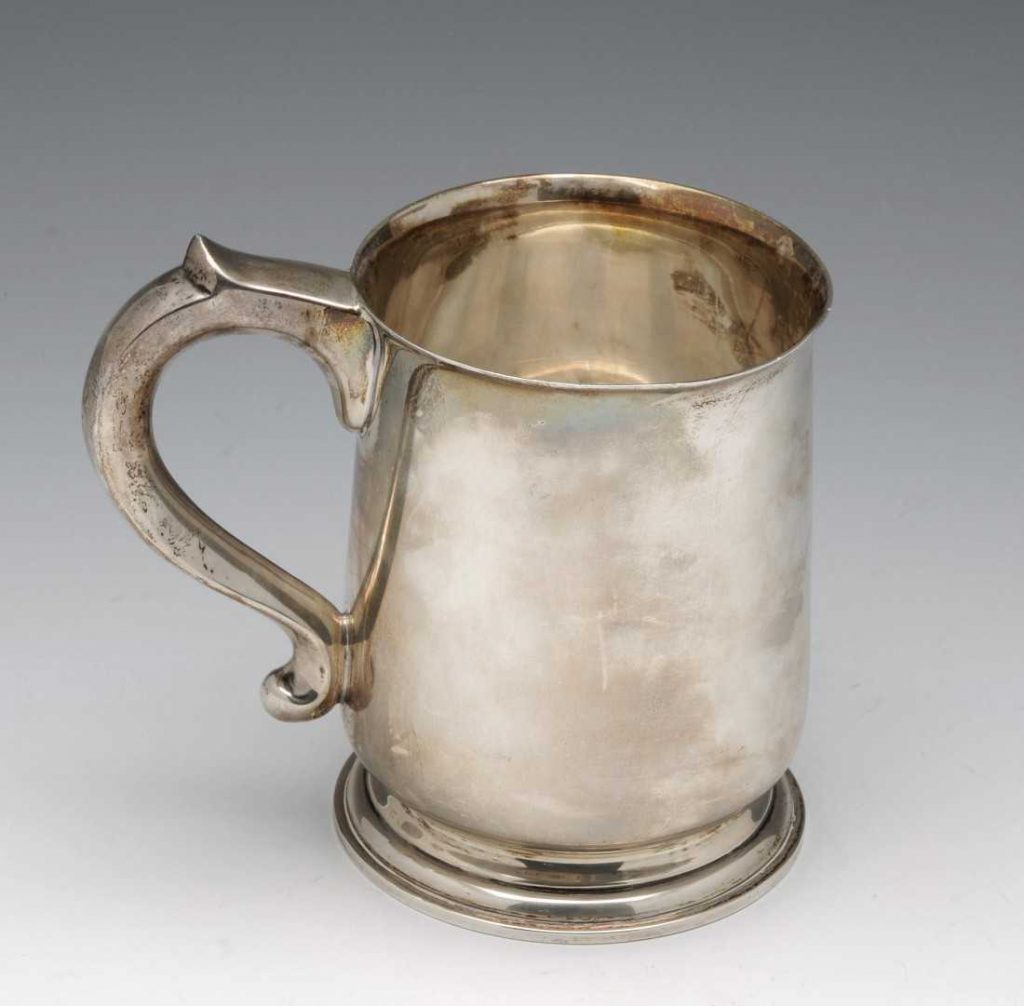
A 1940’s silver mug of slightly tapering plain form, with stylised leaf capped scroll handle and on spreading circular foot. Hallmarked Deakin & Francis., Birmingham 1941. Height including handle measures 5 inches (13cm), weight 12 ozt (374 grams).
Sold for £240 at Fellows in 2011
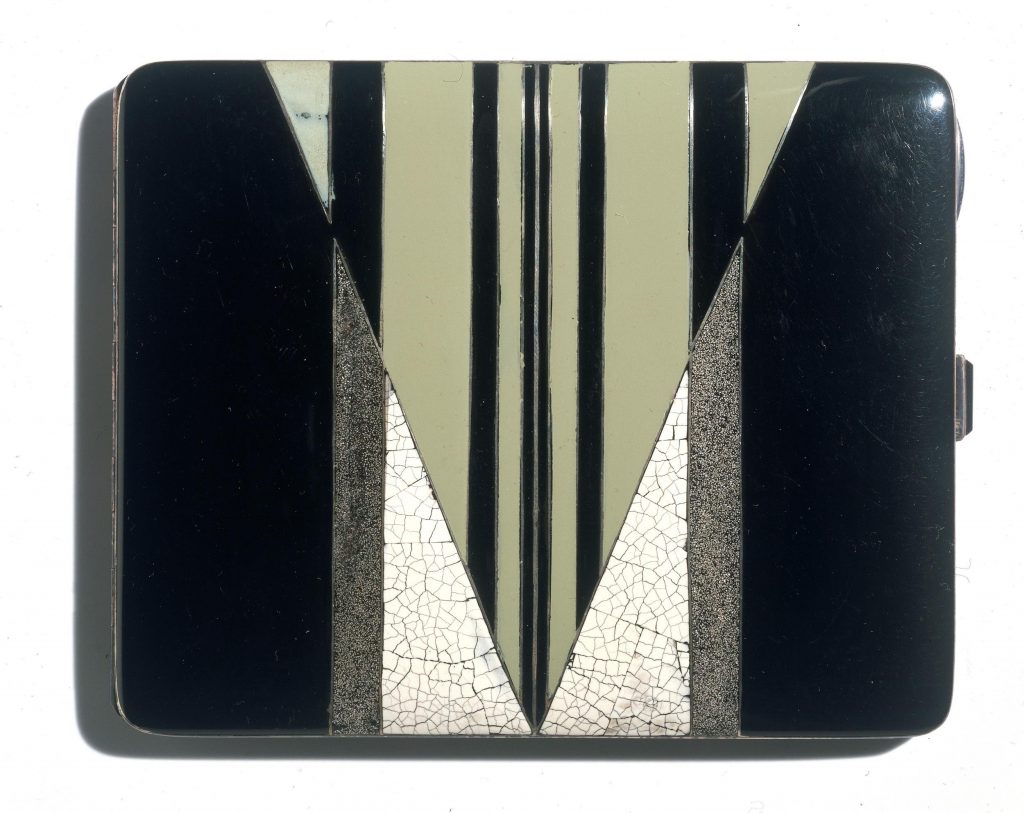
The flat, rectangular form characteristic of a cigarette case makes it an ideal vehicle for a geometric Art Deco design. Gérard Sandoz was a Parisian jewellery designer whose stark, linear style was highly influential. He was one of the founders of the Union des Artistes Modernes in 1930 – an organisation which drew inspiration from the strong, simple forms of machinery, and championed the use in jewellery of materials that were neither precious nor rare.
Reference: © Victoria and Albert Museum
The Modern Era (1921 – Present)
A variety of advances in the early part of the last century allowed for increased production worldwide. This was critical, as many of the high-grade ores throughout the world had been largely depleted by the end of the 19th century. These advances included:
Bulk mining methods, both at the surface and underground, capable of handling large amounts of lower grade base-metal ores that contained by-product silver.
Refinement of extraction techniques capable of separating various base-metal concentrates from ores.
Improved techniques in ore separation, notably froth flotation (post 1910) that allowed for concentration of silver in lead, zinc, and copper concentrates.
Improvements in electrorefining techniques allowing for the easy separation of silver and other base metals from refinery slimes, thus providing an increasingly important source of silver.
Thus, the explosion in the production of these various base-metal sources throughout the 20th century led to an increasing output of silver-bearing residue and ultimately, refined silver.
